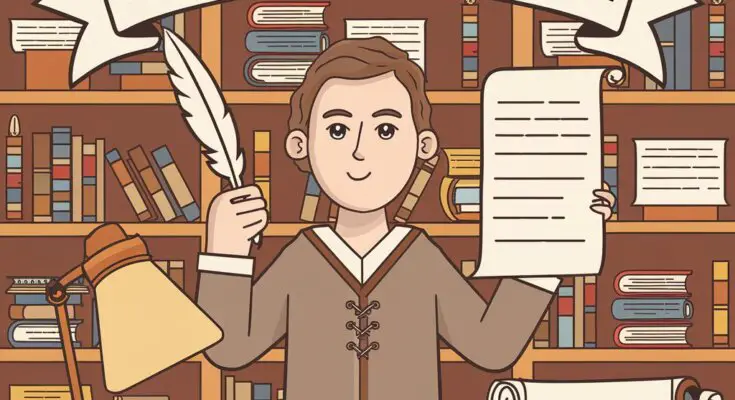Writing a successful grant proposal is a critical skill for any nonprofit organization aiming to secure funding to support its mission.
This guide will take you through a step-by-step approach, making it easy for anyone, even those new to the field, to craft a compelling proposal.
By the end of this post, you’ll be equipped with practical tips and real-life examples to help you navigate the grant writing process with confidence.
What is a Grant Proposal?
Before diving into the details, it’s important to understand what a grant proposal really is. At its core, a grant proposal is a formal request for funding from a foundation, government agency, or other funding source.
It is your opportunity to present your organization’s mission, explain the problem you’re addressing, and show how your program or project is the solution to that problem. Remember, your grant proposal is essentially a story—it should be compelling, clear, and convincing.
Step 1: Research the Right Grant
The first step to writing a successful grant proposal is finding the right grant opportunity. Not all grants are a good fit for every nonprofit. You need to match your organization’s mission with the funder’s priorities. Start by asking yourself:
- What problems does the funder care about solving?
- Does the geographic focus align with your program?
- Are there any specific requirements that your nonprofit must meet?
Example: If your nonprofit focuses on mental health support for veterans, look for grants that emphasize mental health, veterans’ services, or community well-being. This way, you can tailor your grant proposal to directly align with the funder’s goals.
Step 2: Write a Strong Executive Summary
Your executive summary is the first section that funders will read, so it needs to make a powerful impression. Think of it as your elevator pitch—you want to capture their attention quickly. The executive summary should include:
- A brief description of your organization.
- The problem you are addressing.
- A short overview of the solution or project you are proposing.
- The amount you are requesting.
Example: “At [Your Nonprofit], we are committed to improving literacy rates among low-income children in our community. Currently, over 40% of students in our district struggle with reading proficiency. With a grant of $25,000, we will provide after-school reading programs to 200 children, helping them achieve grade-level proficiency by the end of the school year.”
Step 3: Craft a Compelling Problem Statement
A strong problem statement is key to writing a successful grant proposal. This section should demonstrate your understanding of the problem and show the funder why it matters. Use data and real-world examples to illustrate the need.
Example: “In our city, 1 in 5 families live below the poverty line, making it difficult for children to access quality after-school programs. This gap in educational resources leads to lower graduation rates and fewer opportunities for these children to succeed later in life. Our community center aims to close this gap by providing affordable and accessible educational support.”
Step 4: Set Clear Goals and Objectives
Your goals and objectives should be specific, measurable, and achievable. Funders want to know that their money will be put to good use and that you have a plan for measuring success. Here’s how to frame your goals and objectives:
Example Goal: Improve literacy among children in our community.
Example Objective: Increase the number of children reading at grade level by 25% within 12 months through weekly tutoring sessions.
Step 5: Describe the Solution and Program Design
Now that you’ve outlined the problem, it’s time to present your solution. This is where you describe your program or project in detail. Explain how your solution addresses the problem and outline your plan for implementation. Be clear about the activities, timeline, and resources needed.
Example: If your nonprofit is providing STEM education to underprivileged children, you might describe the workshops you plan to hold, the curriculum you’ll use, and how you’ll recruit volunteers to serve as mentors.
How a Small Nonprofit Secured a $50,000 Grant
Let’s take a quick break and hear the story of a small nonprofit that turned a simple idea into a funded project. Two years ago, a community-based nonprofit called Bright Future Center applied for a $50,000 grant to create a mentorship program for high school students.
At first, they struggled with articulating their mission and program goals. But instead of giving up, they sought advice from a grant writing workshop and restructured their proposal to focus on outcomes.
They highlighted the story of Jamal, a high school sophomore who joined their mentorship program and improved his grades dramatically. By weaving Jamal’s story into their proposal, they made their request more relatable.
They focused on real-life impacts, making the funders see the difference their grant could make. Their improved proposal won the $50,000 grant, enabling them to expand their mentorship program and reach even more students.
This story shows how focusing on outcomes and using personal stories can make your grant proposal stand out. It’s not just about data—it’s about people and impact.
Step 6: Develop a Detailed Budget
The budget section of your grant proposal is where you outline how the funds will be spent. It’s important to be transparent and provide a detailed breakdown of your expenses. This helps the funder see that you have thought through every aspect of your project.
Example Budget Breakdown:
- Program Coordinator Salary: $20,000
- Educational Materials: $5,000
- Facility Rental: $3,000
- Marketing and Outreach: $2,000
- Transportation for Participants: $1,000
Make sure your total budget matches the amount you are requesting and aligns with the activities you described.
Step 7: Write a Strong Evaluation Plan
An evaluation plan shows the funder how you will measure the impact of your project. It demonstrates that you are committed to accountability and transparency. Outline the methods you will use to track your progress and measure the outcomes of your project.
Example: “We will use pre- and post-assessment surveys to measure the improvement in students’ reading levels. Monthly progress reports will be shared with our board of directors and funders to ensure we are meeting our goals.”
Step 8: Showcase Your Organization’s Strengths
Funders want to see that your organization has the experience and capacity to carry out the proposed project. Highlight your team’s expertise, past successes, and community partnerships.
Example: “Our team includes a licensed social worker with 10 years of experience in youth programs and a program manager who has led successful community initiatives. We have partnered with local schools and community leaders to ensure the success of our project.”
Step 9: Use Simple and Clear Language
While it’s tempting to use technical jargon in your proposal, it’s better to keep the language simple and clear. Remember, the person reading your proposal may not be an expert in your field. Using plain language makes your proposal more accessible and easier to understand.
Call to Action:
Looking for more ways to engage donors and keep them invested in your nonprofit’s mission? Download our free guide: Top 10 Donor Stewardship Strategies for Nonprofits + Free Donor Engagement Checklist. This valuable resource will help you strengthen relationships with your donors and increase loyalty.
Click here to get your free download today!
If you found these tips helpful, don’t forget to subscribe to the Nonprofit Navigators Newsletter for more expert advice, grant writing strategies, and funding opportunities.
Let’s work together to make a lasting impact in our communities.




